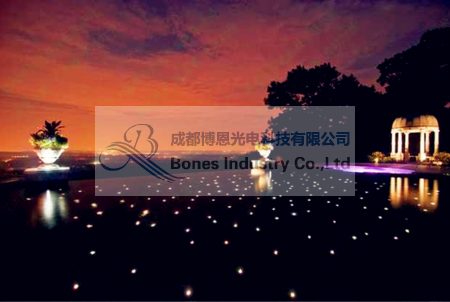Planning a fiber optic lighting project involves several key considerations to ensure its success.

Here are some factors to take into account:
Project Goals and Objectives: Clearly define the purpose of the lighting project, whether it's for decorative purposes, functional illumination, highlighting architectural features, or creating ambiance. Understanding the project goals will help guide the design and implementation process.
Budget: Determine the budget available for the project, including costs for materials, installation, and maintenance. Consider the cost-effectiveness of different lighting solutions and prioritize features based on budget constraints.
Location and Environment: Assess the specific location and environment where the lighting will be installed, including indoor or outdoor settings, ambient light levels, temperature variations, and exposure to moisture or other elements. Choose fiber optic components and materials that are suitable for the intended environment.
Design Requirements: Consider the design requirements of the space, such as layout, dimensions, architectural features, and aesthetic preferences. Determine the desired lighting effects, colors, and intensity levels to achieve the desired ambiance and visual impact.
Lighting Design and Layout: Develop a lighting design plan that outlines the placement of fiber optic light sources, cables, and fixtures to achieve the desired illumination effects. Consider factors such as light distribution, focal points, shadows, and viewing angles to optimize the lighting design.
Safety and Regulations: Ensure compliance with safety standards and regulations applicable to fiber optic lighting installations, especially in commercial or public spaces. Consider factors such as electrical safety, fire codes, accessibility requirements, and environmental regulations.
Energy Efficiency: Select energy-efficient LED light sources and fiber optic components to minimize power consumption and operating costs. Optimize the lighting design to maximize light output while minimizing energy wastage and heat generation.
Installation and Maintenance: Plan the installation process carefully, considering access to the site, mounting options, cable routing, and integration with existing infrastructure. Factor in maintenance requirements, such as cleaning, servicing, and replacing components, to ensure the long-term performance and reliability of the lighting system.
Integration with Controls: Determine whether the lighting system will be integrated with lighting controls, such as dimmers, timers, sensors, or automated systems, to enhance functionality, energy savings, and user convenience.
Project Timeline: Develop a realistic timeline for the project, including design, procurement, installation, testing, and commissioning phases. Consider factors such as lead times for materials, contractor availability, and potential delays to ensure timely completion of the project.
By considering these factors carefully during the planning stage, you can ensure the successful implementation of a fiber optic lighting project that meets the specific requirements and objectives of the space.
Contact: Heroben Lam
Phone: 86-18980938955
Tel: 86-28-82200303
Email: sales@ledlightingfiberoptic.com
Add: No. 60,Chongyang Avenue,Chongzhou Industrial Development Zone, Chengdu,Sichuan 611230 P.R.,China